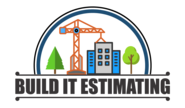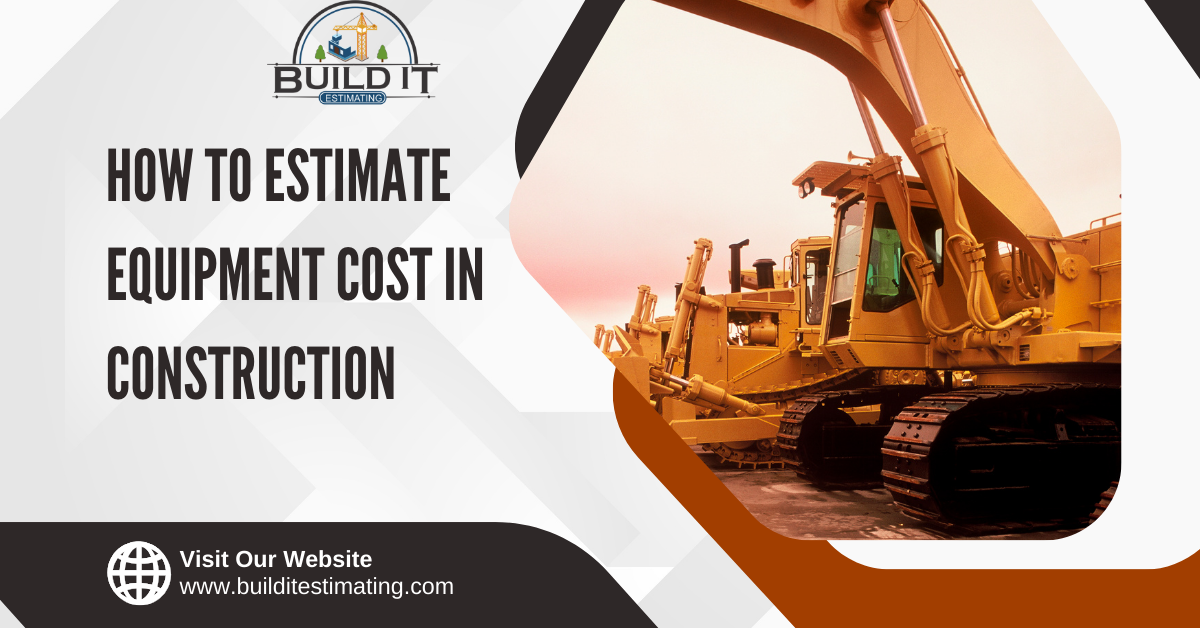Introduction to Estimating Equipment Cost in Construction
Estimating equipment cost in construction is a critical component of project budgeting and financial planning. Equipment costs can significantly impact the overall project expenses, and accurate estimation ensures that budgets are realistic and achievable. This guide will explore the importance of precise equipment cost estimation, the various types of construction equipment, the factors influencing these costs, and methods to estimate them effectively.
The Importance of Accurate Equipment Cost Estimation
Accurate equipment cost estimation is vital for several reasons. It helps in creating realistic budgets, ensuring sufficient funds are allocated for equipment procurement and maintenance. It also aids in financial planning and risk management, preventing cost overruns that can jeopardize the project’s success. Moreover, precise cost estimation enhances transparency and trust among stakeholders, including clients, contractors, and financiers, by providing a clear understanding of the financial requirements.
Types of Construction Equipment
Understanding the types of construction equipment is essential for accurate cost estimation. Equipment can be broadly categorized into heavy machinery, light equipment, and specialized equipment.
Heavy Machinery
Heavy machinery includes large equipment used for major construction tasks, such as excavators, bulldozers, cranes, and loaders. These machines are essential for earthmoving, lifting, and other heavy-duty tasks.
Light Equipment
Light equipment encompasses smaller machines and tools used for specific tasks, such as concrete mixers, compactors, and power tools. While they are less expensive than heavy machinery, their costs still need careful consideration.
Specialized Equipment
Specialized equipment refers to machinery designed for specific construction activities, such as pile drivers, tunneling machines, and asphalt pavers. These are often more expensive due to their specialized functions and limited availability.
Factors Influencing Equipment Costs
Several factors influence the cost of construction equipment, including purchase or rental options, depreciation and maintenance, fuel and operating expenses, and insurance and storage costs.
Purchase vs. Rental Costs
One of the primary decisions in equipment cost estimation is whether to purchase or rent the equipment. Purchasing involves a higher initial cost but can be more cost-effective in the long run for frequently used equipment. Renting offers flexibility and lower upfront costs, making it suitable for short-term or infrequent use.
Depreciation and Maintenance Costs
Depreciation is the reduction in the equipment’s value over time due to wear and tear. Maintenance costs include regular servicing, repairs, and parts replacement to keep the equipment in good working condition. Both factors must be accounted for in the cost estimation.
Fuel and Operating Expenses
Fuel and operating expenses vary based on the type of equipment and its usage. These costs include fuel consumption, operator wages, and other operational costs necessary for the equipment’s functioning.
Insurance and Storage Costs
Insurance covers the equipment against damage, theft, and other risks, while storage costs include the expenses of safely storing the equipment when not in use. Both costs are essential components of the total equipment cost.
Methods for Estimating Equipment Costs
Several methods can be used to estimate equipment costs accurately, including historical data analysis, manufacturer’s guidelines, and cost estimating software.
Historical Data Analysis
Using historical data from previous projects provides a benchmark for estimating equipment costs. This data can be adjusted for current market conditions and specific project requirements.
Manufacturer’s Guidelines
Manufacturers provide detailed cost information, including purchase prices, operating costs, and maintenance schedules. These guidelines are valuable for creating accurate cost estimates.
Cost Estimating Software
Advanced cost estimating software offers databases of equipment costs, market trends, and project-specific factors. Tools like RSMeans and ProEst can streamline the estimation process, providing detailed and accurate cost projections.
Step-by-Step Guide to Estimating Equipment Costs
Estimating equipment costs involves several steps to ensure accuracy and comprehensiveness. Here is a step-by-step guide:
Identify Required Equipment
List all the equipment needed for the project, considering the scope and specific tasks involved. Include both heavy machinery and light equipment.
Determine Usage Duration
Estimate the duration for which each piece of equipment will be used. This includes the time required for the entire project and any specific phases that need particular equipment.
Calculate Purchase or Rental Costs
Based on the decision to purchase or rent, calculate the costs involved. For purchases, include the initial cost, financing charges, and any potential resale value. For rentals, consider the rental rates and the duration of use.
Estimate Operating Costs
Calculate the operating costs, including fuel, operator wages, and any other operational expenses. Use historical data and manufacturer’s guidelines to ensure accuracy.
Factor in Depreciation and Maintenance
Include depreciation costs for purchased equipment and maintenance expenses for both purchased and rented equipment. Ensure regular maintenance schedules are followed to avoid unexpected breakdowns.
Include Insurance and Miscellaneous Costs
Add insurance costs to cover the equipment against risks and storage costs for when the equipment is not in use. Consider any other miscellaneous costs that may arise during the project.
Case Studies and Examples
Examining real-world case studies and examples can provide valuable insights into effective equipment cost estimation. For instance, a construction project that successfully managed equipment costs through detailed planning and regular updates can serve as a model for other projects.
Common Challenges in Equipment Cost Estimation
Despite the best efforts, equipment cost estimation can face several challenges, including price fluctuations, unforeseen expenses, and effective communication with suppliers.
Dealing with Price Fluctuations
Prices of construction equipment and related costs can fluctuate due to market conditions, supply chain disruptions, and other factors. Keeping abreast of market trends and having contingency plans can help manage these fluctuations.
Accounting for Unforeseen Expenses
Unforeseen expenses, such as unexpected repairs or additional rental time, can impact the budget. Including a contingency fund in the budget can provide a buffer for such expenses.
Effective Communication with Suppliers
Maintaining clear and consistent communication with equipment suppliers ensures that cost estimates are based on the latest information. Regular updates and confirmations can prevent misunderstandings and inaccuracies.
Tips for Accurate Equipment Cost Estimation
To enhance the accuracy of equipment cost estimation:
- Regularly Update Cost Data: Keep cost data current by regularly updating it based on market conditions and project experiences.
- Engage with Equipment Suppliers: Build relationships with suppliers to get accurate and up-to-date cost information.
- Utilize Technology and Software: Leverage advanced cost estimating software to streamline the process and improve accuracy.
Conclusion: Best Practices for Estimating Equipment Cost in Construction
Estimating equipment cost in construction requires a thorough understanding of the types of equipment, factors influencing costs, and effective estimation methods. By following best practices, including using historical data, manufacturer’s guidelines, and advanced software, construction professionals can create accurate and reliable cost estimates. Regular updates, effective communication, and contingency planning are essential for managing equipment costs and ensuring the financial success of construction projects.

